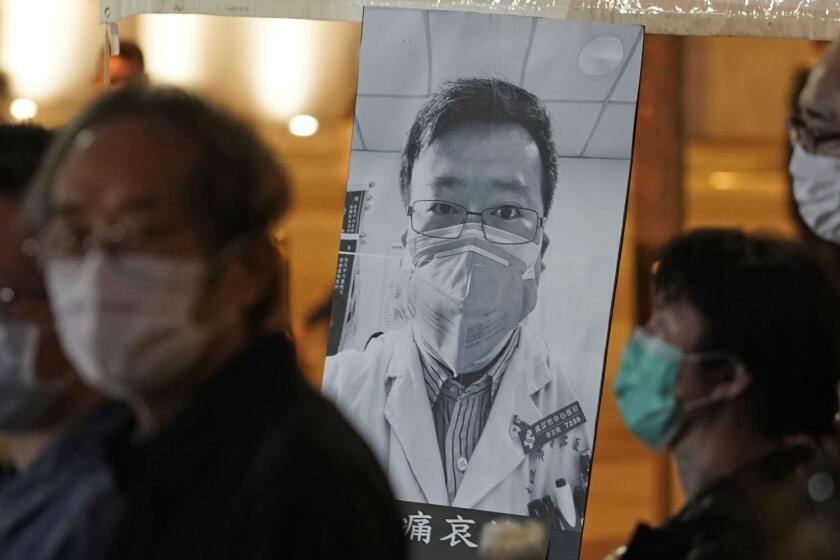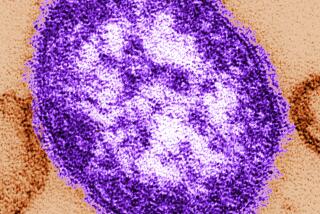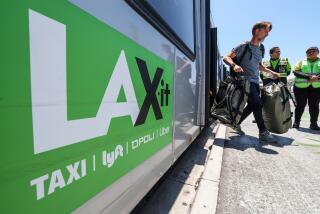LAX coronavirus screenings are haphazard, travelers say. Experts say they’re futile
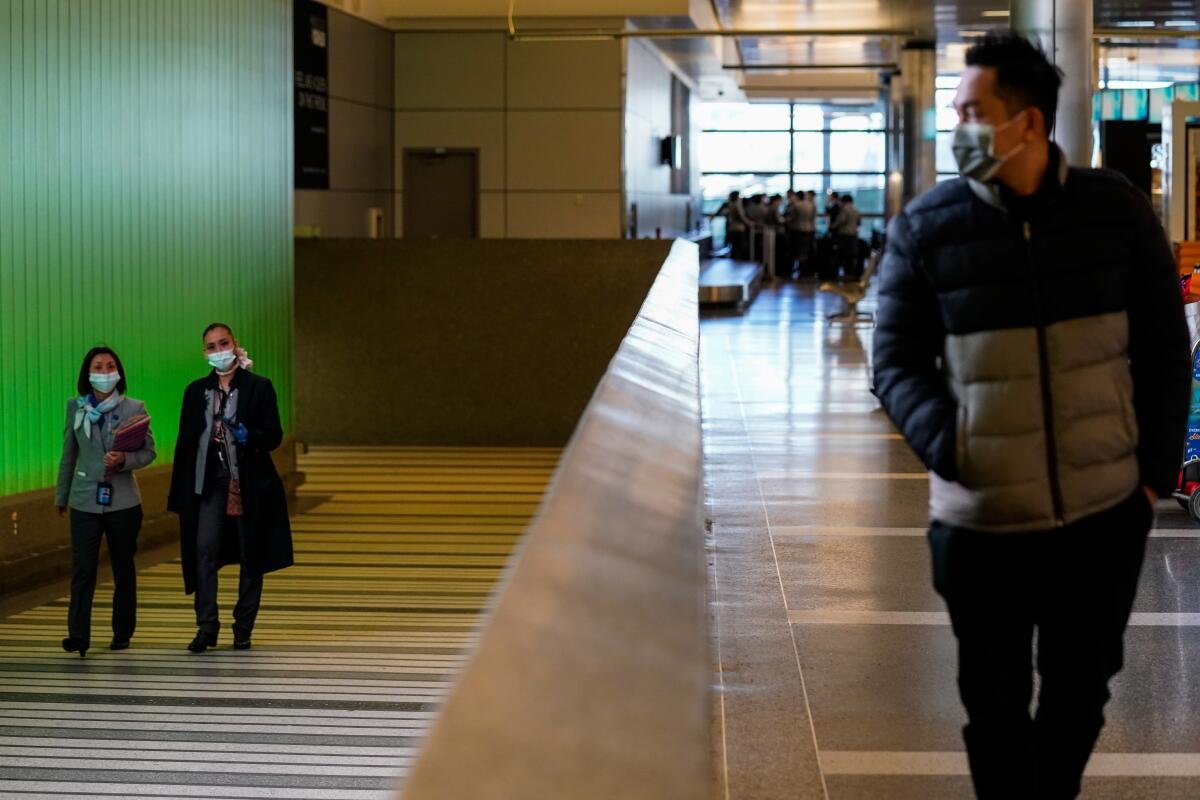
- Share via
As thousands continue to pour into LAX, many international travelers have complained about haphazard health screenings, being required to stand or sit near others who have returned from countries with known outbreaks of the coronavirus, or not being screened at all.
Travelers who were identified as high-risk by the White House but were not screened have taken to social media to decry the process, expressing alarm over the fact that they were so easily able to slip through the cracks amid an extraordinary global health crisis.
The latest updates from our reporters in California and around the world
Kitty Horowitz said she and her husband also weren’t screened when they arrived at LAX from London on Sunday. The couple had been vacationing in Europe since late February, and had visited Austria and Germany — both on the list of countries that fell under Trump’s order.
Horowitz said they were given a form on the plane asking whether they had traveled through the Schengen Area of Europe, where the coronavirus has quickly spread. Several people sitting near them on the plane were coughing.
“We were terrified,” she said. When they landed, no one came to collect the form and they were not directed to submit the form anywhere, she said. Several others interviewed by The Times also said their forms were not collected.
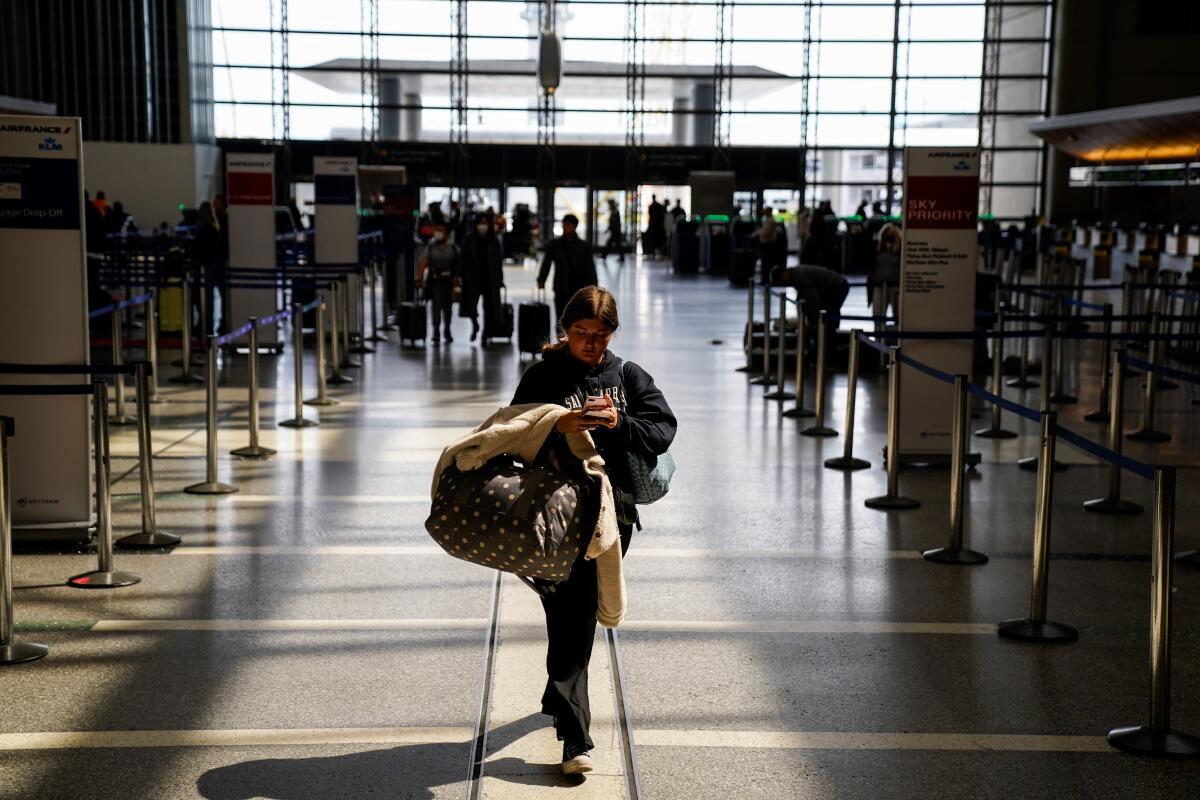
“We saw no one getting screened. No one took the form from us. Nothing,” she said. “We’ve never gotten through as fast as we did.”
Public health experts, however, say the screenings offer a false sense of security and are largely futile at this point in the pandemic.
The process — particularly corralling travelers from high-risk countries into lines and holding areas to await screening — endangers passengers and those with whom they will later come into contact, experts said.
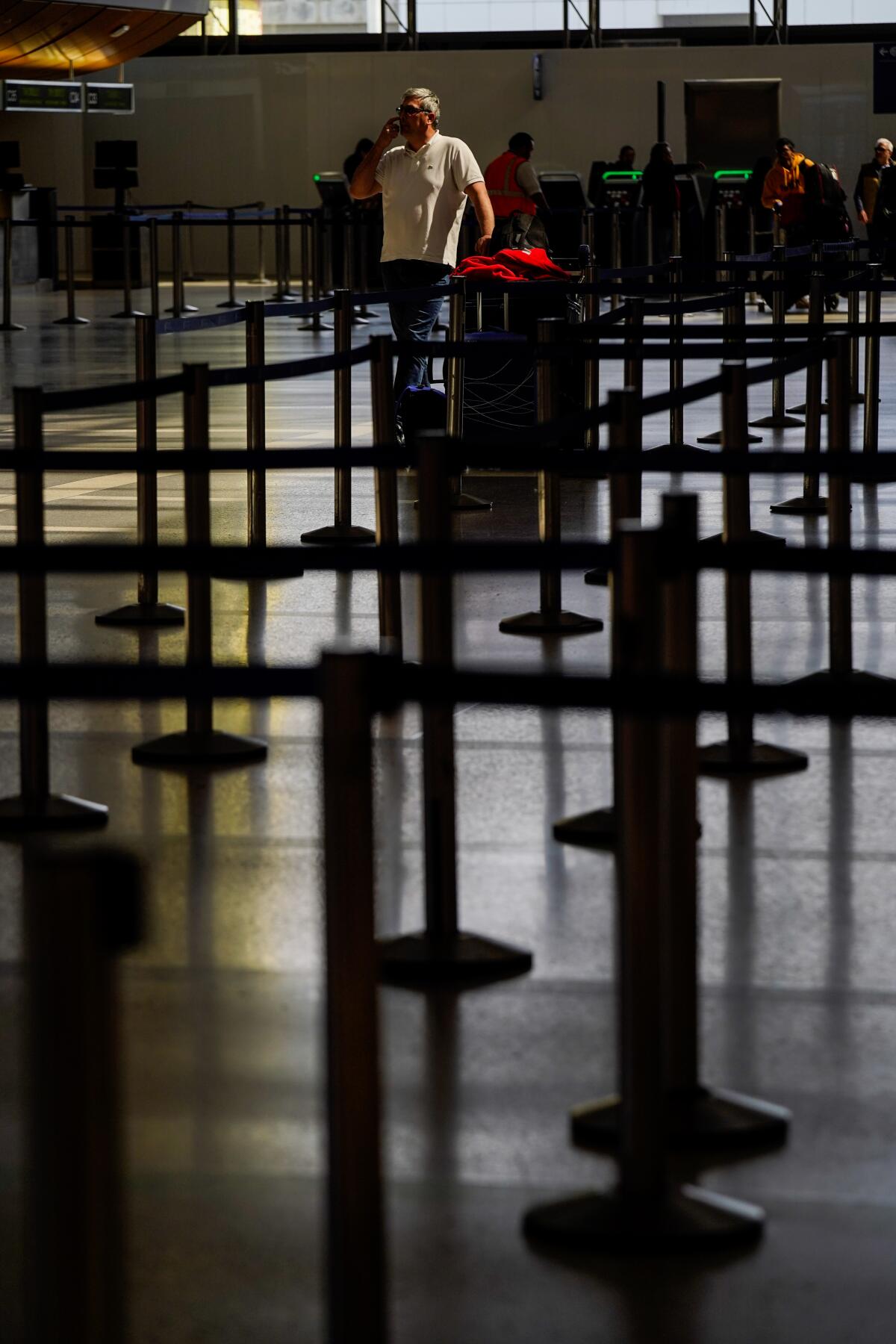
“This to me is the very definition of what we should not be doing,” said Carolyn Cannuscio, director of research at the Center for Public Health Initiatives at the University of Pennsylvania.
“We’re creating a risk there,” she added. “And we’re very likely to miss people who are in fact infected, and may also be transmitting the virus but haven’t yet had symptoms.”
The Trump administration has been slow to ramp up screening at international airports, even for travelers re-entering the United States from coronavirus hot spots.
On March 12, the Trump administration dramatically narrowed the number of places where American citizens returning from Europe could enter the U.S. — currently just 13 airports, including LAX.
Customs and Border Protection and health officials began conducting “enhanced screenings” — consisting of temperature checks and questions about travel history and symptoms — for those passengers the day after. The Centers for Disease Control and Prevention said returning travelers “may be screened” if they visited countries with widespread transmission and would be told to stay home for 14 days and practice social distancing.
The bottleneck of travelers scrambling to get back to the U.S. created mass chaos at some airports last weekend. At O’Hare International Airport in Chicago, throngs of people stood shoulder-to-shoulder, in some cases for several hours, as they waited to be screened.
LAX reported much shorter screening lines, with the airport estimating about 30 minutes being tacked onto the average wait time for passengers who were flagged for testing.
The Times spoke with several travelers who should have been screened at LAX under the White House’s criteria but were not. The Department of Homeland Security, which is in charge of the screening process, did not respond to requests for comment.
Ron Nehring, the director of international programs for a nonprofit, flew into LAX from London’s Heathrow Airport on Monday night. Trump’s order adding the United Kingdom and Ireland to the list of European nations identified as “Level 3” countries hadn’t taken effect by then, but Nehring had visited two countries already on the list, Germany and Poland, so he assumed that he’d be screened.
He wasn’t, he said. The colleague he’d been traveling with, who flew into Dulles International Airport outside of D.C., was screened there, he said.
“I walked off the plane and was expecting someone to ask me what countries I’d been to,” Nehring said. “I was expecting to be flagged and for my temperature to be taken.”
Some travelers, though concerned by the lack of screening, were grateful to avoid cramped waiting lines.
Cannuscio, the public health expert from the University of Pennsylvania, said such lines do more harm than good. One of her students flew into John F. Kennedy International Airport this week and spent three hours in a crowd waiting to be screened.
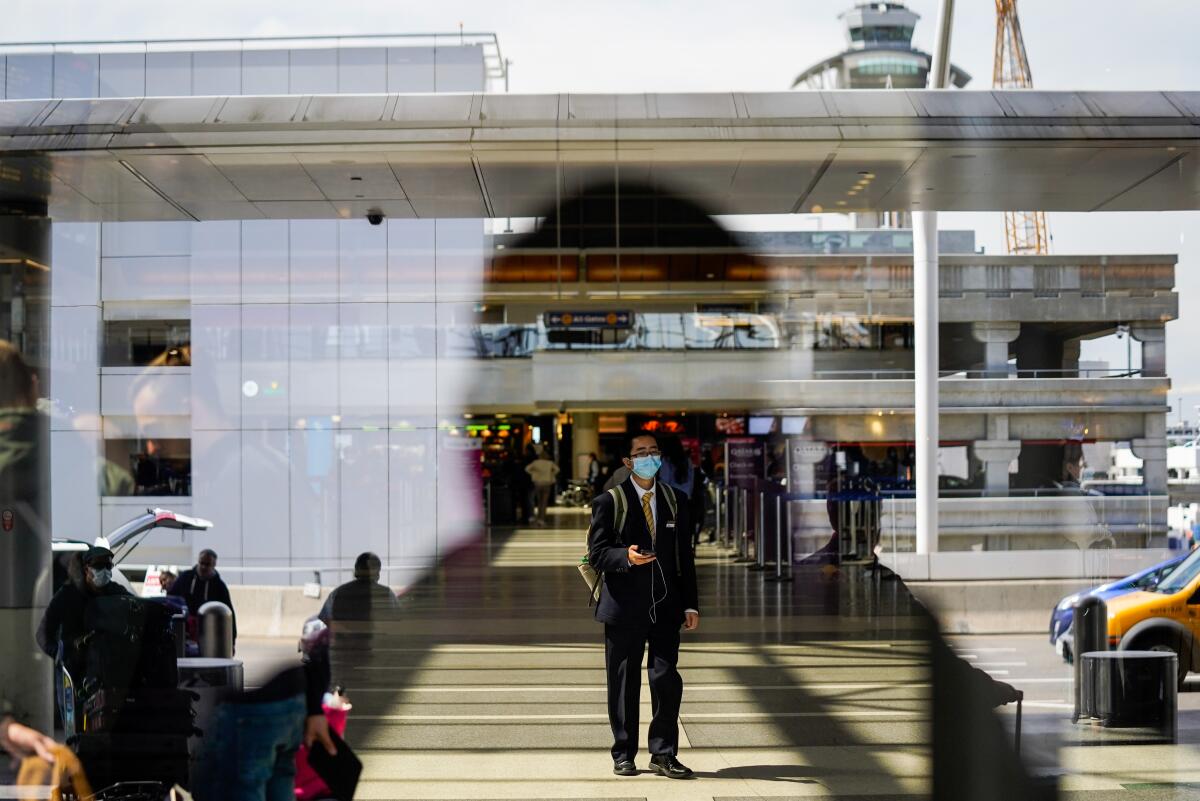
“That is so upsetting, because it’s a perfect environment for sharing the virus among travelers of very many points of origin,” Cannuscio said.
LAX travelers interviewed by The Times said neither airport officials nor the Department of Homeland Security encouraged social distancing among those waiting to be screened.
Jerome Snell, who also flew into LAX from London on Sunday, was among those flagged for a screening. During his trip to Europe, Snell had visited France, another of the 26 European countries in the Schengen Area.
He was asked to go to the passport-control area of the airport, where he waited briefly for an initial evaluation, he said. Very few people stood in line with him, though later he would watch that line become longer and more cramped.
An airport employee took his passport and asked him if he had experienced any COVID-19 symptoms — dry cough, shortness of breath — or had been around anyone with the illness.
Snell felt fine. But he was told he needed a second screening and was asked to wait in a small sitting area, where eventually about 50 other people joined him, he said. Snell, who recently went into remission for neck cancer, made sure to keep a few feet between himself and others.
After 45 minutes, he said, a customs employee called him to a counter and returned his passport, telling him he was “good to go.” No further health evaluation took place.
“I don’t know how they made the determination that I didn’t need my temperature checked, but somebody else did,” said Snell. “We’re not doing enough to prevent the spread of this disease.”
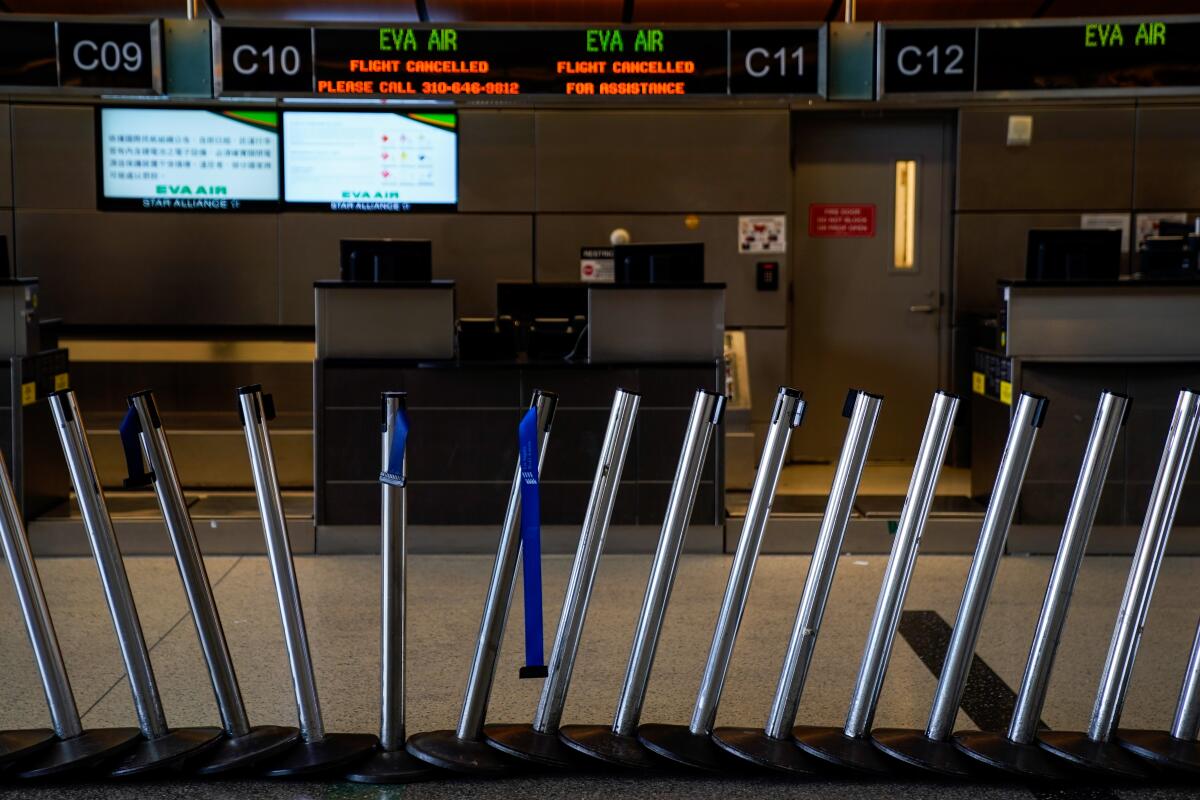
Jeffrey Klausner, an adjunct professor of epidemiology at UCLA, said airport screenings only make sense if the goal is to identify people who need medical help and give them care.
He said a rigorous screening program would be costly and would need to be checked by a secret-shopper sort of system, where people exhibiting symptoms are sent through to see if the screenings are being done properly.
“For it to work, they’ll really need to invest in a comprehensive, high-quality system,” Klausner said.
Such a screening might have helped save the first person to die of COVID-19 in L.A. County.
Loretta and Roddy had layovers in South Korea on their way to the Philippines and back. They landed at Los Angeles International Airport on March 8. But according to Rowena, Loretta’s daughter, the couple was not screened for symptoms at the airport in South Korea or in Los Angeles. (The family asked that their last names not be used for fear of being shunned or targeted.)
The White House has repeatedly said that all passengers on direct flights from South Korea would be screened in that country before boarding planes to the U.S. Vice President Mike Pence said passengers would receive “multiple temperature checks,” among other measures.
Rowena, who lives in South Carolina, said she thinks a screening could have saved her mom’s life.
“If they would’ve caught her, she wouldn’t have gone home, gone to sleep and not woken up again,” she said. “It’s just crazy.”
Public health experts have warned that screenings can fail to detect many who are infected with COVID-19, as they may not develop symptoms for several days, if ever. And some people may not be truthful when asked if they’d had contact with an infected person because they fear being quarantined.
“The current process will identify the highest risk potential active cases — many of which may turn out to be false positives because a high temperature may be associated with other illnesses or situations,” said Jay Wolfson, senior associate dean for health policy and practice at the University of South Florida’s college of medicine.
And because the coronavirus is already spreading in the U.S. through community-level transmission, health screenings at airports will not curb the effects of the pandemic and could give citizens a false sense of security, experts say.
“It’s not the optimal message you want to send, that you can only get the virus from being outside of the country,” said Amesh Adalja, senior scholar at Johns Hopkins University’s Center for Health Security.
Such screenings are also a poor use of limited public resources, Cannuscio said, which should instead be used to keep tabs on travelers from high-risk countries once they get home, to test symptomatic people for the virus, and to make sure that those with positive results remain in quarantine.
To prevent further spread of the virus in the U.S., officials at every level should implement rigorous social distancing strategies as soon as possible, Cannuscio said. This could mean advising people against air travel completely.
“I think all nonessential travel should be canceled,” she said.
More to Read
Sign up for Essential California
The most important California stories and recommendations in your inbox every morning.
You may occasionally receive promotional content from the Los Angeles Times.
